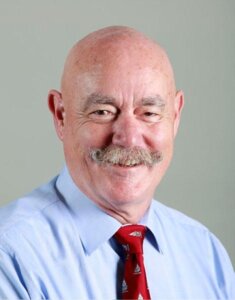Something about Mead

Dr. Mead Killion passed away comfortably on November 3, 2025 but he was aware of this issue of CanadianAudiologist.ca celebrating his life and accomplishments. Despite his passing, clinicians and researchers will continue to see “something about Mead” in their work for many years to come.
This issue of CanadianAudiologist.ca is dedicated not only to Dr. Mead Killion’s life’s accomplishments, but also to his work supporting and teaching others. This issue is called “Something about Mead” and while that sounds like a song from The Sound of Music- “Something about Maria” (or also known as “How do you solve a problem, like Maria?”), it has nothing to do with musicals… actually, it does, since many of Mead’s innovations and product commercializations over the years have benefitted musicians by protecting their hearing and designing amplification products that have been the mainstay for hard-of-hearing musicians for decades. And Mead, like Maria in The Sound of Music, was someone who was quite special!
Mead was known as an inventor of products that left us scratching our heads trying to figure out why we didn’t think of it first; he was a teacher that had always had an uncanny way of translating phrases like “the acoustic impedance of the acoustic inertance, is proportional to frequency” into everyday English by just saying that “high frequencies don’t like small spaces”. Since the 1980s, Mead never just travelled with a single suitcase when giving talks —he also had another bag filled with horns, lengths of tubing of various diameters, and other demonstrations that bring both the acoustics and the electronics of hearing aids to life.
But Mead never forgot his teachers. He made sure that we knew who Elmer Carlson was – an amazing engineer at Industrial Research Products/Knowles in the 1970s and early 1980s- who designed the basis for what was to become the musicians’ earplug; and Elmer Carlson’s work on the twin tube idea led to Mead’s patent on insert earphones. Elmer Carlson’s inventions and ideas were crucial to the ER15 and ER20 musicians’ earplugs and the ER3 insert earphone. Mead’s company, Etymotic Research, made many important innovations available to our field that we couldn’t imagine not having access to. And later, M.C.K. Audio was founded, allowing Mead to develop other products for people with hearing impairments. Another teacher was Ed Villchur—the father of multiband compression and the modern (air-suspended) loudspeakers we all take for granted. Mead always made clear to all of us who he worked with. Some of his articles had an Acknowledgement section that was almost as long as the article —see, for example, one of my personal favorite articles from 1988, “An acoustically invisible hearing aid,” where Mead introduced the world’s first high-fidelity hearing aid and also acknowledged the work of many others in our field.
Mead has written a wealth of articles, either alone or with colleagues —88 articles and 21 book chapters —and holds 92 US patents. What better way to spend an afternoon by reading through them, and this is what we have done. This is not just a labour of love for the editors of this issue of CanadianAudiologist.ca but a great way to be forced to go back to “first principles” and learn from the master himself. Each of Mead’s articles and book chapters are packed with great translational information. In addition to being available on the Etymotic.com website, the references can be found at www.MeadShare.com.
I would like to thank the three guest editors of this issue of CanadianAudiologist.ca for assisting me in putting together “Something about Mead”. Each short item consists of an article that Mead has been involved in, followed by something about Mead’s character that makes him so important to our field, followed by a short summary, and then a link to that article which is housed on the Etymotic.com website- the company he founded and became synonymous with all the “stuff” we needed as clinical and research audiologists. We would like to thank Etymotic Research for maintaining Mead’s many articles on their website. Larry Revit worked closely with Mead for decades on a number of important projects and served as his teaching assistant during his master’s training in Audiology. Steve Armstrong, an engineer and President of Sounds Good Labs, is well-known in the hearing aid industry and has designed many of the circuits that have been, and are still be used in modern hearing aids. Steve Aiken - a great teacher and researcher like Mead —is an associate professor at Dalhousie University in Halifax, Nova Scotia, and the associate editor of CanadianAudiologist.ca, and I am the editor-in-Chief of CanadianAudiologist.ca and someone who is privileged to have called Mead Killion a friend.
Marshall Chasin, AuD, Editor in Chief
Steve Aiken, PhD, Associate Editor
Steve Armstong, BEng, Guest Editor
Larry Revit, MA, Guest Editor

